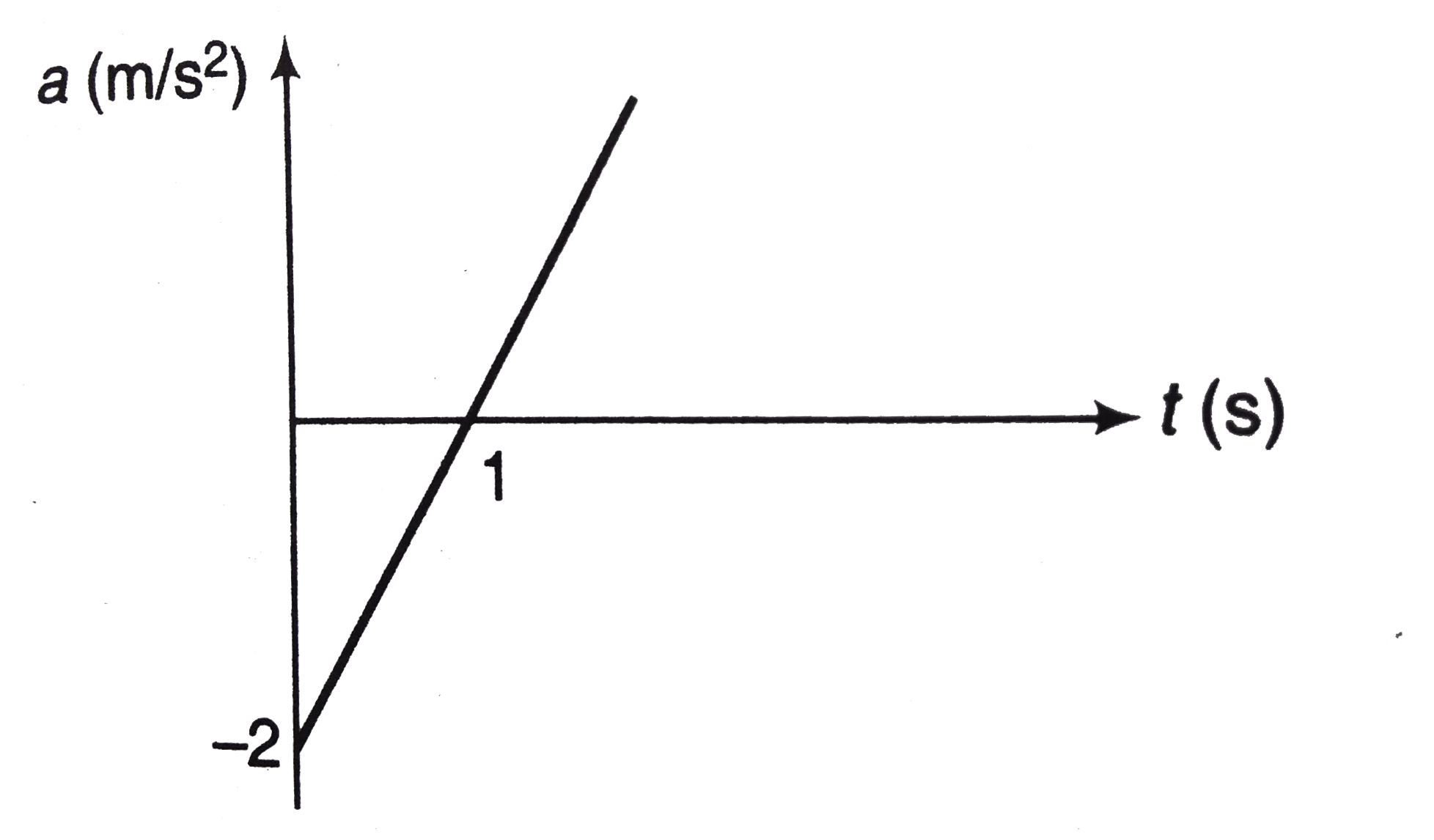A bird flies for 4s with a velocity V=(t−2)m/s in a straight line where t= time in second Calculate the displacement and distance covered by the bird
To solve the problem of calculating the displacement and distance covered by the bird flying with a velocity given by V=(t−2)m/s for a duration of 4 seconds, we can follow these steps:
Step 1: Understand the Velocity Function
The velocity of the bird is given by:
V(t)=t−2m/s
This means that the velocity depends on time t.
Step 2: Determine the Velocity at Specific Times
We need to evaluate the velocity at the endpoints of the interval from t=0 to t=4:
- At t=0:
V(0)=0−2=−2m/s
- At t=2:
V(2)=2−2=0m/s
- At t=4:
V(4)=4−2=2m/s
Step 3: Sketch the Velocity-Time Graph
Plotting the velocity against time:
- The graph starts at V=−2 m/s at t=0.
- It crosses the time axis (velocity = 0) at t=2 seconds.
- It ends at V=2 m/s at t=4.
Step 4: Calculate the Displacement
The displacement can be calculated by finding the area under the velocity-time graph from t=0 to t=4.
1. Area from t=0 to t=2:
- This area is a triangle with a base of 2 seconds and a height of -2 m/s.
- Area A1:
A1=12×base×height=12×2×(−2)=−2m
2. Area from t=2 to t=4:
- This area is also a triangle with a base of 2 seconds and a height of 2 m/s.
- Area A2:
A2=12×base×height=12×2×2=2m
3. Total Displacement:
Displacement=A1+A2=−2+2=0m
Step 5: Calculate the Distance Covered
Distance is the total area under the velocity-time graph, considering only positive values.
1. Convert Negative Area to Positive:
- For the area from t=0 to t=2, we take the absolute value:
|A1|=2m
2. Total Distance:
Distance=|A1|+A2=2+2=4m
Final Results
- Displacement: 0m
- Distance Covered: 4m
The velocity of the bird is given by:
V(t)=t−2m/s
This means that the velocity depends on time t.
We need to evaluate the velocity at the endpoints of the interval from t=0 to t=4:
- At t=0:
V(0)=0−2=−2m/s
- At t=2:
V(2)=2−2=0m/s
- At t=4:
V(4)=4−2=2m/s
Plotting the velocity against time:
- The graph starts at V=−2 m/s at t=0.
- It crosses the time axis (velocity = 0) at t=2 seconds.
- It ends at V=2 m/s at t=4.
The displacement can be calculated by finding the area under the velocity-time graph from t=0 to t=4.
- This area is a triangle with a base of 2 seconds and a height of -2 m/s.
- Area A1:
A1=12×base×height=12×2×(−2)=−2m
- This area is also a triangle with a base of 2 seconds and a height of 2 m/s.
- Area A2:
A2=12×base×height=12×2×2=2m
Displacement=A1+A2=−2+2=0m
Distance is the total area under the velocity-time graph, considering only positive values.
- For the area from t=0 to t=2, we take the absolute value:
|A1|=2m
Distance=|A1|+A2=2+2=4m
- Displacement: 0m
- Distance Covered: 4m
Topper's Solved these Questions
- Motion in Straight Line BOOK - VMC MODULES ENGLISHCHAPTER - Motion in Straight Line EXERCISE - SOLVED EXAMPLES
20 Videos
- Motion in Straight Line BOOK - VMC MODULES ENGLISHCHAPTER - Motion in Straight Line EXERCISE - PRACTICE EXERCISE
80 Videos
- MOTION IN A STRAIGHT LINE & PLANE BOOK - VMC MODULES ENGLISHCHAPTER - MOTION IN A STRAIGHT LINE & PLANE EXERCISE - IMPECCABLE
52 Videos
- Motion in Two DimensionsBOOK - VMC MODULES ENGLISHCHAPTER - Motion in Two DimensionsEXERCISE - MCQ
2 Videos
Similar Questions
A body moving along a straight line traversed one third of the total distance with a velocity 4m/sec in the first stretch. In the second stretch, the remaining distance is covered with a velocity 2m/sec for some time t0 and with 4m/s for the remaining time. If the average velocity is 3m/sec, find the time for which body moves with velocity 4m/sec in second stretch:
View SolutionVelocity of a particle varies with time as v=4t. Calculate the displacement of particle between t=2 to t=4 sec.
View SolutionThe acceleration of particle varies with time as shown.

(a) Find an expression for velocity in terms of t.
(b) Calculate the displacement of the particle in the interval from t=2s to t=4s. Assume that v=0 at t=0.
View SolutionA tiny mass performs S.H.M along a straight line with a time period of T=0.60sec and amplitude A=10.0cm. Calculate the mean velocity (in m/sec) in the time to displace by A2.
View SolutionA body is moved from rest along a straight line by a machine delivering constant power. The ratio of displacement and velocity (s/v) varies with time t as
View SolutionA body is moved from rest along a straight line by a machine delivering constant power. The ratio of displacement and velocity (s/v) varies with time t as
View SolutionThe displacement of a particle moving in a straight line is described by the relation s=6+12t−2t2. Here s is in metre and t in second. The distance covered by the particle in first 5s is
View SolutionThe displacement of a particle moving in a straight line is described by the relation s=6+12t−2t2. Here s is in metre and t in second. The distance covered by the particle in first 5s is
View SolutionA particle is moving on a straight line. Its velocity at time t is (8−2t)m/s. What is the total distance covered from t=0 to t=6s?
View SolutionA particle starts from rest, moving in a straight line with a time varying acceleration (inm/s2):a=30−152√t, where time is in seconds . The displacement of the particle in 4 seconds is .
View Solution
